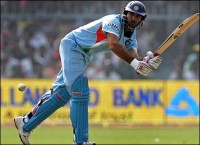Cricket’s new turn

You don’t say!
Darius Nakhoonwala
Then the leader writer rebelled and made the sensible point that "The real challenge before cricket is its ability to refashion itself to meet the demands of a new and changing world." Then the proprietor’s bee stung the poor sod because he was forced to write that "Time may not be out of joint for cricket in
The Hindu, whose editor has played at the Ranji level, wrote an excellent edit. Along with the Business Standard, it was the only one to ask the only question on which the success of the game depends. "The key question is whether a game built on national identity can sustain a tournament where loyalty towards a team is manufactured." The Business Standard also asked the same question. "The real bet, though, is on the Twenty20 tournament attracting large TV audiences… will the Indian viewer, who so far has had time only for international contests, watch games that do not embody any nationalism, with the same fervour? Can the American baseball or football model or the European soccer model — both of which are based primarily on club-level fan loyalties — work in
It also tried to explain the business model. I quote it in extensor because it was the only paper to explain the business side of it.
"The real risk has been taken by the TV company that has committed a little over a billion dollars for TV rights over the next decade. Over the same 10 years, the team owners will get their lion’s share of TV sponsorship fees (80 per cent for the first five years, 60 per cent for the next five) and the title sponsorship fee (60 per cent) which is to be paid by DLF. Each team owner therefore stands to get a guaranteed share of between $80 million and $100 million over 10 years — which makes the teams themselves virtually free for some of the less ambitious bidders (even the highest team bid, by Mukesh Ambani, was for $111.9 million). The team owners also get access to all on-ground and local revenues as well as the obvious branding opportunities, all of which taken together should be comfortably enough to pay the players’ fees (a total of between $3 million and $5 million per team). After 10 years, team ownership is there in perpetuity without any further charges. So what might have seemed like a flaky play by movie stars and cash-rich businessmen is in fact a pretty safe bet."
The last sentence is wrong. There is no such thing as a safe bet in sports. A great deal of hedging is needed, and Indian cricket is very far from that.The Pioneer, Asian Age, Times of






